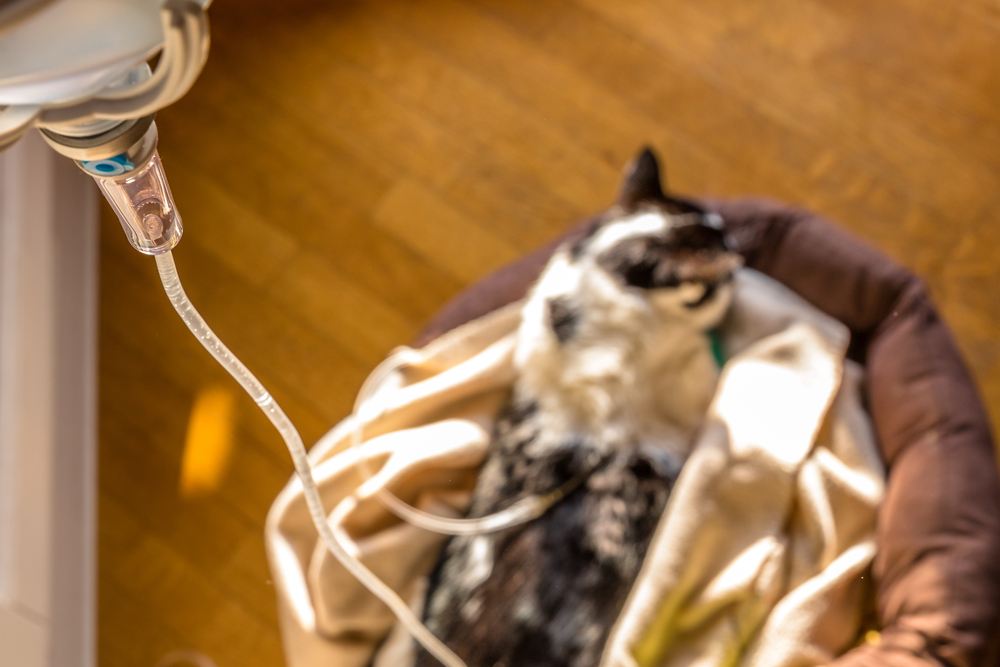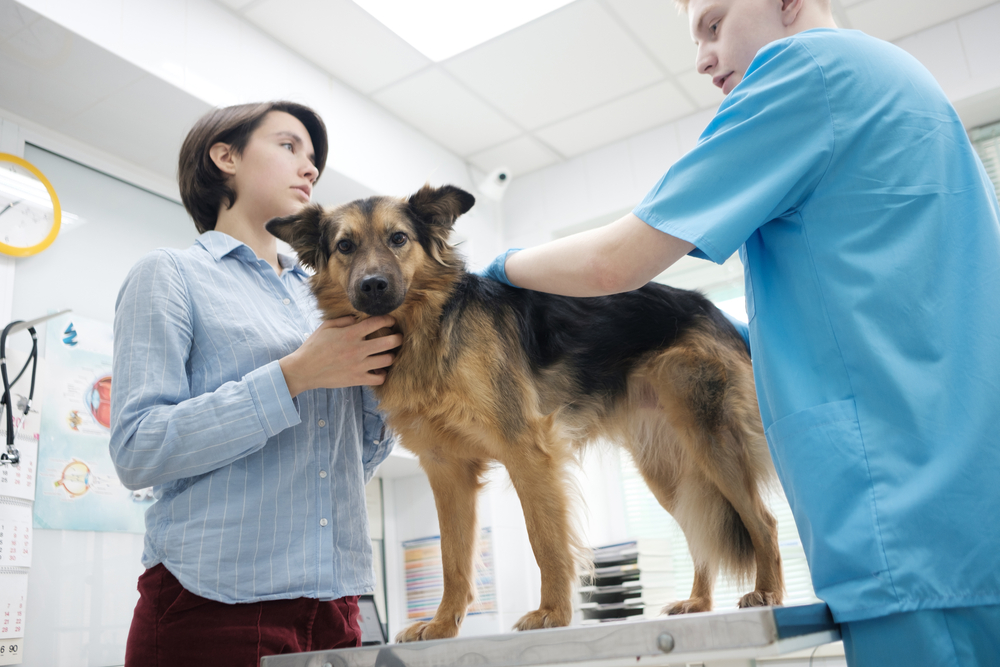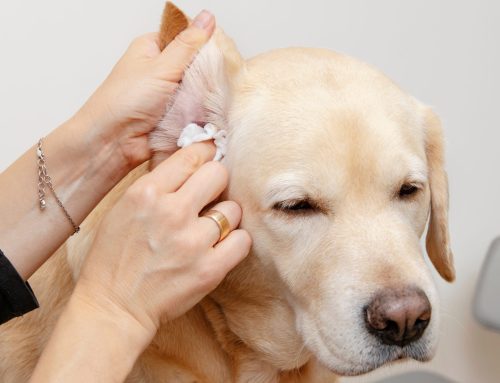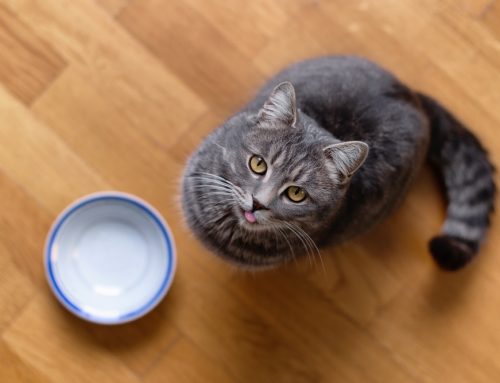While you know the kidneys are important for urine production, you may not realize that they perform many other functions. In pets and people, the kidneys:
- Filter and excrete toxins and metabolic wastes from the body
- Regulate fluid, electrolyte, and mineral balances
- Conserve water and protein
- Maintain blood pressure
- Produce red blood cells
When pets develop chronic kidney disease (CKD), their kidneys no longer perform these functions well, and their general health, comfort, and quality of life begin to decline. CKD is especially common in senior pets, affecting as many as 1 in 10 dogs and 1 in 3 cats.
Chronic kidney disease in pets
CKD, chronic renal failure (CRF), renal insufficiency—no matter the name, the result—ultimate kidney failure—is the same. Over time, some pets’ kidneys can no longer provide all the essential tasks to sustain their bodies, and CKD is the result. Alternatively, an acute kidney injury in a younger pet can also result in chronic disease.
When the kidneys cease to function properly, toxins and metabolic wastes build up, anemia develops, and homeostasis in the body fails. Over time, these health issues will ultimately overwhelm the body, but with an early kidney disease diagnosis, pets can maintain a good quality of life, much longer.
Chronic kidney disease signs in pets
CKD can take months before signs are obvious. Generally, pet owners won’t notice changes until about 75% of kidney function is already lost, which makes early detection and treatment so critical.
Early signs of CKD in pets include:
- Excessive thirst
- Increased frequency and amount of urination
- Inappetence
- Nausea
- Vomiting
- Diarrhea
- Oral ulcers
- Bad breath
- Weight loss
- Muscle wasting
- Unkempt coat
- Pale gums
- Lethargy
These signs can appear gradually and may be so subtle that they can be missed by the pet owner. Oftentimes, pet owners chalk up inappropriate urination, lethargy, and a poor appetite to normal aging changes, however, the veterinarians at Village Veterinary Hospital have specialized kidney function screening tests that can catch kidney disease early.
Chronic kidney disease diagnosis in pets
There are ways to identify CKD. To start, our Village Veterinary Hospital veterinarian will perform a comprehensive physical exam on your pet. They will discuss any changes in behavior or appetite that you have seen at home. Because CKD is not seen from an external exam, the veterinarian may also recommend a blood and urine test to help them better evaluate your pet. Oftentimes, CKD is diagnosed at a pet’s regular wellness visit through routine screening tests before they show clinical signs.
To look internally at your pet’s kidney function, we may run the following diagnostic tests:
- Complete blood count (CBC) — A quantitative analysis of your pet’s blood cell counts will determine if anemia is present.
- Blood chemistry panel — Pets with later-stage CKD often show elevated kidney enzymes, which are associated with waste products that are typically filtered out by the kidneys. Elevations in creatinine (CRE) and blood urea nitrogen (BUN) can indicate kidney dysfunction, dehydration, shock, toxin ingestion, or urinary obstruction. The panel will also show electrolyte imbalances. Changes in CRE and BUN usually do not occur until 75% of the kidneys have become irreparably damaged.
- Symmetric dimethylarginine (SDMA) — SDMA is a waste product of protein metabolism, and measuring SDMA’s concentration allows a much earlier CKD diagnosis. Unlike an elevated CRE and BUN that appears only when 75% of kidney function has been lost, the SDMA value will rise when as little as 40% of the kidneys are damaged. In addition, the SDMA test is kidney function specific and rises only when kidneys are injured or damaged.
- Urinalysis — A urinalysis will determine how well your pet’s kidneys are concentrating urine, which is a sign of their overall function.
If changes in your pets blood or urine samples raise concerns additional diagnostic testing may be necessary to determine the cause of your pet’s kidney disease, check for concurrent conditions, and grade kidney dysfunction severity. These tests may include:
- Abdominal X-rays – While it is true that xrays are normally used to look at bones, they can also show the size and shape of the kidneys, as well as the presence of kidney stones, possible masses within the abdomen, or changes in the placement of internal organs.
- Abdominal Ultrasound – Ultrasound can give a detailed look inside of the kidneys and also show the blood flow within the kidneys.
- Blood pressure reading — High blood pressure is often a byproduct of CKD because your kidneys are not getting enough blood flow and will release a hormone that increases blood pressure.
- Advanced urine testing — A urine culture may be needed to check for a urinary tract infection or kidney infections, and a urine protein-to-creatinine (UPC) ratio to determine the amount of protein lost in the urine.
Chronic kidney disease management in pets

CKD is incurable, but can be successfully managed, especially if caught early in the disease process. Common CKD therapies for pets include:
- Fluid therapy — Pets with CKD often experience dehydration, so administering subcutaneous fluids at home and encouraging water consumption with fresh water, can help the kidneys flush out toxins and maintain their bodies’ proper electrolyte balance.
- Dietary changes — Switching to a veterinary prescription diet based on your pet’s kidney disease stage can help aid kidney function.
- Kidney health supplements — Supplements designed to support kidney health can aid in eliminating waste products, which reduces nausea and increases appetite.
- Medications — Prescription medications can manage kidney disease in many ways. There are medications to ease your pet’s nausea, pique their appetite, and manage their high blood pressure if needed.
Stay on top of your pet’s overall health including their kidney health by scheduling regular wellness visits. Give our Village Veterinary Hospital team a call to set up your pet’s next appointment.



















Leave A Comment